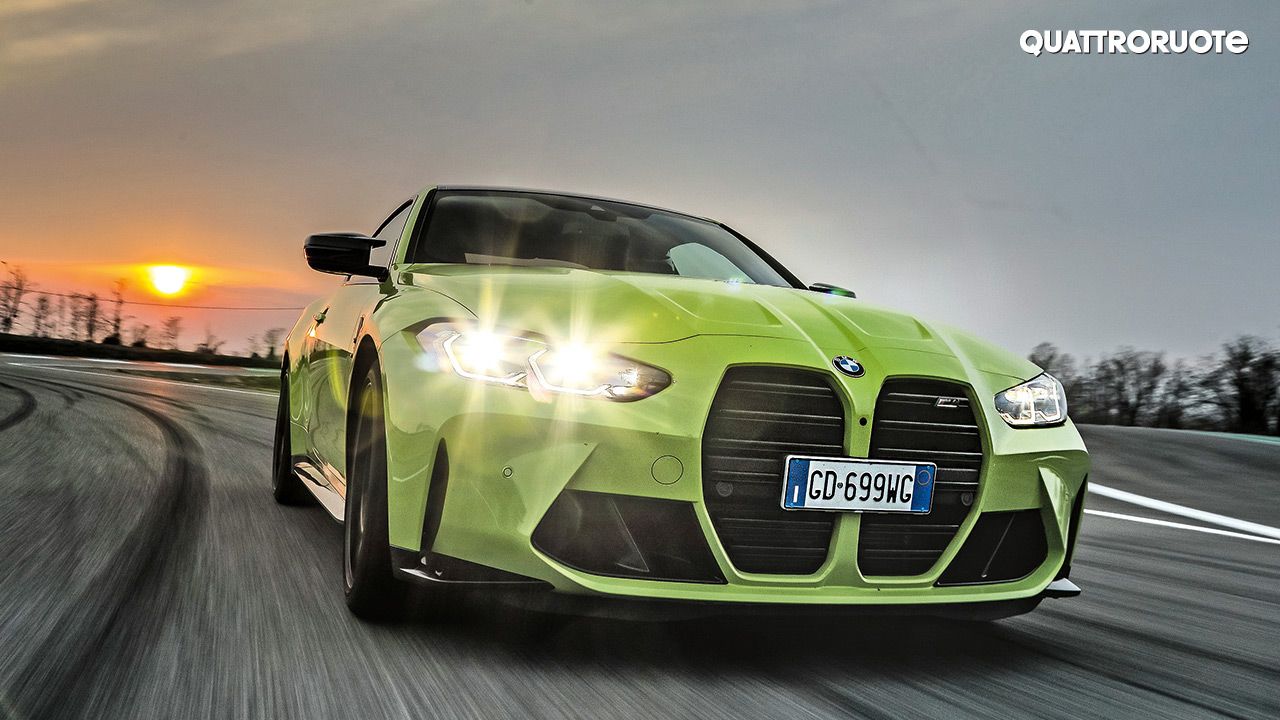
Drifting was always in its blood, and now it can even measure and score it. This German coupé aims to be as much fun on the road, as it is on the track.
Until now, I hadn’t come across a car that can judge me, especially one that can analyse, process, and declare a verdict on the way I manage my drifts. But all that has changed. Ladies and gentlemen, here is the new BMW M4, with the M Drift Analyzer – a new onboard function dedicated to driving with smoking wheels. All right, it’s a game for drift enthusiasts, for what really matters, in the end, are the facts. And the latest generation of the M3/M4 – codenamed G80/G82 – proves, as you’ll see, that it has nailed its target, i.e., driving with a capital ‘D’ – it manages to be both fun and tremendously effective, much more than before.
Now, if you want, we can still discuss the design. But before we go ahead, let me tell you that you will either love it or hate it. Or you may even get a bit nostalgic and wonder whether it was better with a naturally aspirated six or a V8, with a manual or a dual-clutch. I think that it’s all about progress and positioning. The new model today looks more like the M5. And, if you really feel nostalgic about the original M3 concept, there is now the M2 CS, which embodies the spirit well.
The 2021 model is a coupé, which – as often happens during generational changes – expands its range to include every faintest nuance of driving – from pushing it to the limit for a dose of adrenaline rush to driving it in comfort and relaxation. The new carbon seats encapsulate the essence of this dual-aspect of the vehicle – they are a great piece of design, they carry and support your body in a way that’s, well, extraordinary; they weigh 10kg less than the standard ones, and they have that rare feature that allows you to remove the headrest padding to make room for the helmet. The last one makes sure that while enjoying a track day, you don’t end up with your chin pointing down. At the same time, they are suitable for every body type, and what’s more, they can be heated and adjusted electrically, which, if you think about it, seems almost counterintuitive for quasi-racing bucket seats in terms of weight reduction.
Still, this will be the first M3/M4 in history to have all-wheel drive. Sacrilege? As far as I’m concerned, not at all – in winter I can drive up the snowy ramp to my garage without getting stuck, and if I want to write my name on the asphalt with the rear wheels, I can do that as well because the one developed by BMW’s M Division is a 4x4, which can also become a pure rear-wheel drive.
30BHP more or the manual transmission
Now, the version that we tested in Vairano was a rear-wheel-drive M4 Competition, with 503bhp, instead of the 473bhp of the standard versions, and an automatic transmission. Why? Well, because the ‘non-Competition versions – and don’t say that BMW doesn’t get nostalgic – come with a six-speed manual.
As I parked myself on the driver’s seat – for the record, the seats on this cost around ₹3.5 lakh, but they are also included in the specific package, which costs the price of a small car and gives you the complete arsenal for the track – I found myself thinking that I didn’t have to familiarise myself too much with the controls, for I already knew the 3 Series and its derivatives. Before starting, however, I focused on the fundamental M menu because it allows you to adjust and customise every setting of the M4, creating two custom profiles, which can be saved to two steering-mounted buttons labelled M1 and M2. Now, this is a particularly interesting feature, for it allows you to engage your preferred M settings directly from the steering wheel.
The M4 also gives you an option to adjust the brakes (for more or less sporty pedal feedback). Moreover, its new traction control system has ten levels of adjustment – a very useful solution, for it’s always good to have the best electronic assistance available for different kinds of variables, including road conditions, personal tastes, and the level of wear and tear of the tyres. Given the usefulness of this feature, it’s a pity that there isn’t a dedicated knob or button on the steering wheel to adjust it in real-time – perhaps, a matter of cost – because thinking of adjusting it through the infotainment system in a corner at 200 km/h is pure madness.
With the two customised driving programs at my fingertips, it was time for some action. The M1 button puts the car in a zen-like mode – relaxed and without any worries. The active electronics took on the responsibility of its 650Nm of torque as I ploughed through the humid roads of the city. The steering wheel felt quite light, and the engine response was smooth, progressive, and not intrusive at all in terms of sound.
On the road, the M4 is a remarkable tool – the cabin is well soundproofed, and the Level 2 assisted driving, if you opt for one, works well in terms of steering wheel management and speed.
Easy and effective
However, when you find yourself on the asphalt flanked by kerbs, the M2 mode comes into play – no electronic intervention here, and all the hardware assume a sporty demeanour. The steering takes on a different character, and the relationship between the wheels and the asphalt becomes more intimate, thanks also to the extra-large 275mm front tyres. They also make cornering particularly rapid and precise on mixed and fast roads. And it’s precisely on those stretches that I appreciated the confidence that the rear-end of this brilliant machine is capable of instilling. In short, it’s reassuring, and you never have that nagging feeling that you are about to lose traction.
On the other hand, while exiting corners, without electronic intervention, power oversteer reigns supreme, even in third and fourth gear. However, thanks to its brilliant accelerator with excellent feedback, you can squeeze every single ounce of torque and decide the extent of turn to exit the curve in a way that’s not only very effective but also disarmingly easy.
In short, the M4 offers an enviable combination of fun and harmony. Now, the combination of the engine and gearbox offers its best in everyday driving, offering a fluid and smooth driving experience. However, when you’re driving with a knife between your teeth, the new gearbox, with torque converter, sometimes makes you nostalgic for the previous double-clutch – don’t get me wrong, the gear changes are very fast, but that little bit of slippage between shifts does mar the fun a bit. In short, the twin-turbo six-cylinder, given its powerful delivery, deserves something drier and more decisive. But that’s enough for now, or I may become nostalgic.
1. On the gear lever, which can also be used in manual/sequential mode, is the Drivelogic button, which can adjust the shift speed in three levels.
2. M Mode allows you to switch to the default Road, Sport, and Track modes and also changes the layout of the instrumentation.
3. The Setup button gives direct access to the screen (top), where you can adjust and customise various aspects of the car; you can then create two custom programs, which can be engaged using the M1 and M2 buttons on the steering wheel (above).
4. The button is dedicated to the engine sound, which is more or less sporty.
Each carbon M seat weighs 10kgs less than the standard seat, despite featuring a heating function and being electrically adjustable.
Home challenge with a virtual judge
Everyone knows what drifting is, but perhaps some may not know about its origins. In the 90s, the Japanese automotive subculture, influenced by the popular manga series Initial D, began to engage with this special technique, which over time became a real sporting event. A drifting competition includes a panel of judges who assign scores based on speed, duration of the drift, and yaw angle. And that’s exactly what the M Drift Analyzer is: a judge integrated into the infotainment system. Simply go to the menu, activate the function, and start a session. The system, just like the judges, takes into consideration the duration (in seconds) and distance (in meters) of the drift, as well as the yaw angle, and assigns you a grade in stars – a maximum of five. But that’s not all. The software also takes into account the level of grip, since drifting in dry conditions is more difficult than in wet conditions, and the setting of the traction control. So, if you use a high level of traction assistance (there are ten available), you will not go beyond three stars.
So, we had a great opportunity to test the system in the field: the south loop of Vairano, a nice big curve that just needs to be crossed sideways. There were three drivers – the Drift King, Davide Fugazza, yours truly, and a third one who was a little less used to the tracks, my colleague Roberto Ungaro. Rules were simple: same conditions for all, electronics off, and only one attempt each. Fugazza was the first to go. And, as expected, his drift was brilliant – the M Drift Analyzer gave him five stars. It was my turn. I flagged it late compared to Davide, and my manoeuvre was also less clean and progressive. The result, however, changed slightly – I got 4.5 stars. Roberto performed nice oversteer, although for not very long. The system gave him three stars, which then became 3.5, thanks to a couple of extra attempts we gave him.
A Track-Proof Project
In times of hybrid and pure electric supercars, the M4 is powered by a BMW classic – the three-litre inline six-cylinder. This latest variation, called the S58, is dedicated to sports versions (it was born in 2019 for the X3M) and is therefore designed to withstand the stresses and strains of the track. This is already apparent from the forged steel crankshaft and “closed deck” crankcase – a subframe that joins the supports of the shaft to the walls of the cylinder block to increase the rigidity of the whole, enhance the performance, and raise the maximum revs, which reaches up to 7,200rpm. Turbocharging is offered by two turbos, each of which serves three cylinders and has its own exhaust line with a particulate filter and two catalysts each, as well as electrically controlled throttles to modify the sound of the engine. Other features include an oil sump, with two separate chambers, an intake sump, which ensures proper lubrication even during high cornering loads, and the split cooling circuit with two radiators and as many pumps, as well as dedicated oil coolers. The latter has been modified, especially for this application, to ensure the sportiest handling possible and reduce shift times and torque-converter slips. The body has also been adapted; numerous reinforcing elements in the engine compartment – under the floor and in the suspension frames – have made it more resistant to torsion. The chassis has an almost ideal weight distribution between the front and rear. Technicians of BMW M GmbH have tweaked it with new stiffer bushings for the suspension arms, springs, and shock absorbers to ensure a rapid response from the steering and better performance from the tyres (which, for the first time, have different diameters for both the front and rear). Finally, the brakes (with optional carbon-ceramic discs) are electro-hydraulically operated, allowing the driver to select between two different pedal settings.
- Data Sheet: Data declared by the manufacturer for the car under test
Engine
• Front longitudinal, petrol
• 6 cylinders inline
• Bore – 84.0mm
• Stroke – 90.0mm
• Displacement – 2,993cc
• Maximum power – 503bhpat 6,250rpm
• Maximum torque – 650Nm from 2,750 to 5,500rpm
• Light alloy cylinder block and head
• 2 overhead camshafts, dual-phase variator, variable intake valve lift, 4 valves per cylinder (chain)
• Direct injection, 2 turbochargers, and intercooler
• Particulate filter
Transmission
• Rear-wheel drive
• 8-speed automatic transmission
• Electronically controlled self-locking differential
Tyres
• Michelin Pilot Sport 4S
Front 275 / 35ZR19 100Y
Rear 285 / 30ZR20 99Y
• Repair kit
Body
• Steel body with aluminium and carbon fibre parts, 2 doors, 4 seats
• MacPherson double-jointed front axle, coil springs, anti-roll bar
• Rear, 5-lever multilink, coil springs, anti-roll bar
• Hydraulic shock absorbers electronically controlled
• Electro-hydraulically controlled brakes with self-ventilating carbon-ceramic discs, ABS, and ESP
• Rack and pinion steering, electric servo control
• Fuel tank – 59 litres
Dimensions and Weight
• Wheelbase – 2,860mm
• Track width – Front: 1,620mm; Rear: 1,610mm
• Length – 4,790mm; Width – 1,890mm; Height – 1,390mm
• Weight – 1,800kg, Fully-loaded – 2,155kg
• Luggage compartment – 407 litres
Manufactured in
• Dingolfing (Germany)
Faster than the Giulia
Let’s say it, even though at the risk of hurting Alfa Romeo fans – the M4 at Vairano was two seconds faster than the Giulia Quadrifoglio. This (indirect) comparison gives you an idea of the BMW’s performance because, as you know, we have always considered the Alfa a reference point in terms of handling and driving pleasure. Having said that, the M4 has a really great chassis – balanced, stable at high speeds, and powerful under braking. While it turns really well when entering a corner, it’s during the exit that its best aspect comes to the fore – with the electronics off, the oversteer is almost constantly present, especially when the rubber overheats, but it’s easily manageable, thanks to an excellently adjustable accelerator. And then there are those ten settings for traction control – you can play with them until you find the ideal balance between the exit speed and level of skidding. The M4 would have been perfect with a little less roll and a little more agility during direction changes. And the powertrain . . . well, the engine is exuberant, even if the delivery deserves a little more character, and is complemented perfectly by the automatic transmission, which is great but not very sporty – shifts are as quick as they are soft, to the point of making you nostalgic for the brutality of a double-clutch.
Hot Lap of 1:28.613 on the Pro Track
In November last year, we tested the Pagani Huayra and used the opportunity to inaugurate the Vairanoring Pro – the extended layout of our handling track (3,320 meters), which adds almost 1km of straight and a very fast bend on the north loop. These two elements are necessary for high-performance cars to express their full power and aerodynamic potential. Although the M4 is not a hypercar, we still wanted to test it on the Pro. The result – 1.28:613, which is eight seconds more than the Pagani. But in time, we are sure, more appropriate references will come.
- 2021 BMW M4 COMPETITION
Engine: 2,993cc Inline-six twin-turbo
Power: 503bhp
Consumption:
Claimed – 9.7km/l
Detected – 10.0 km/l
CO2 Emission
Claimed – 234g/km
Detected – 239g/km
Riproduzione riservata
Read more:
Porsche 718 Cayman GT4 vs Alpine A 110 S vs BMW M2 CS: Road Test
BMW is the first automaker to use Pirelli's new natural rubber tyres




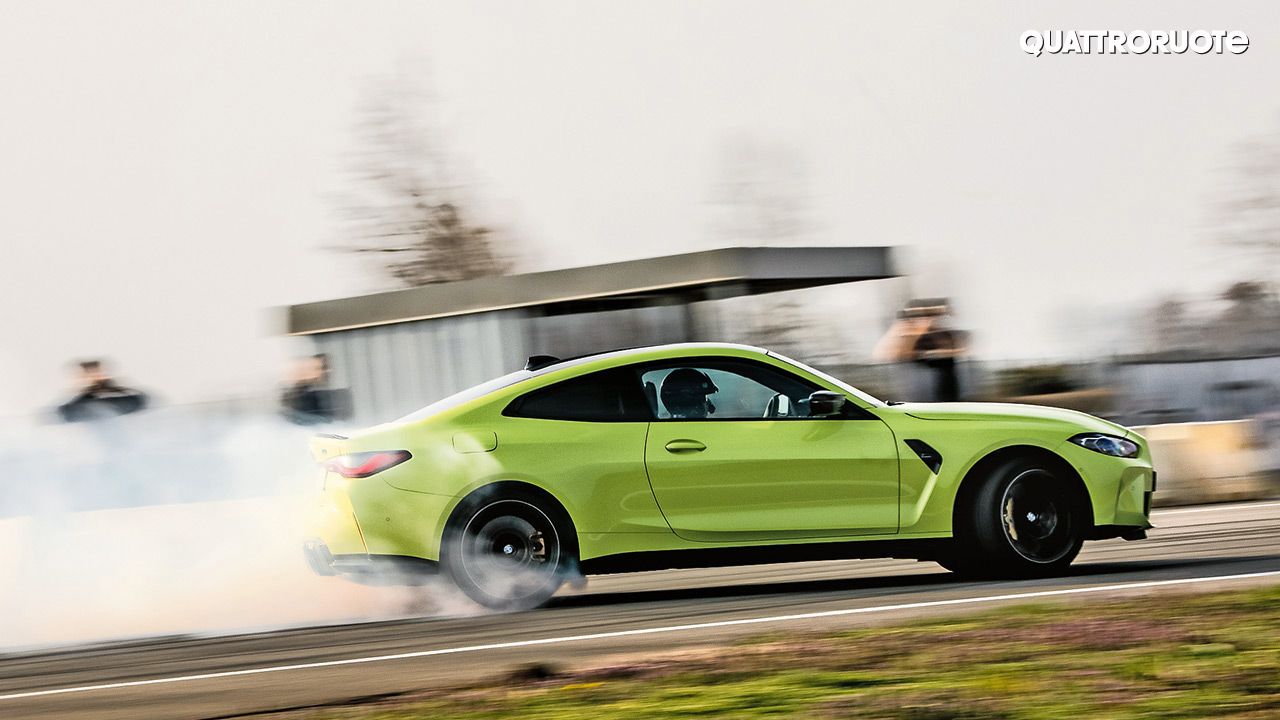
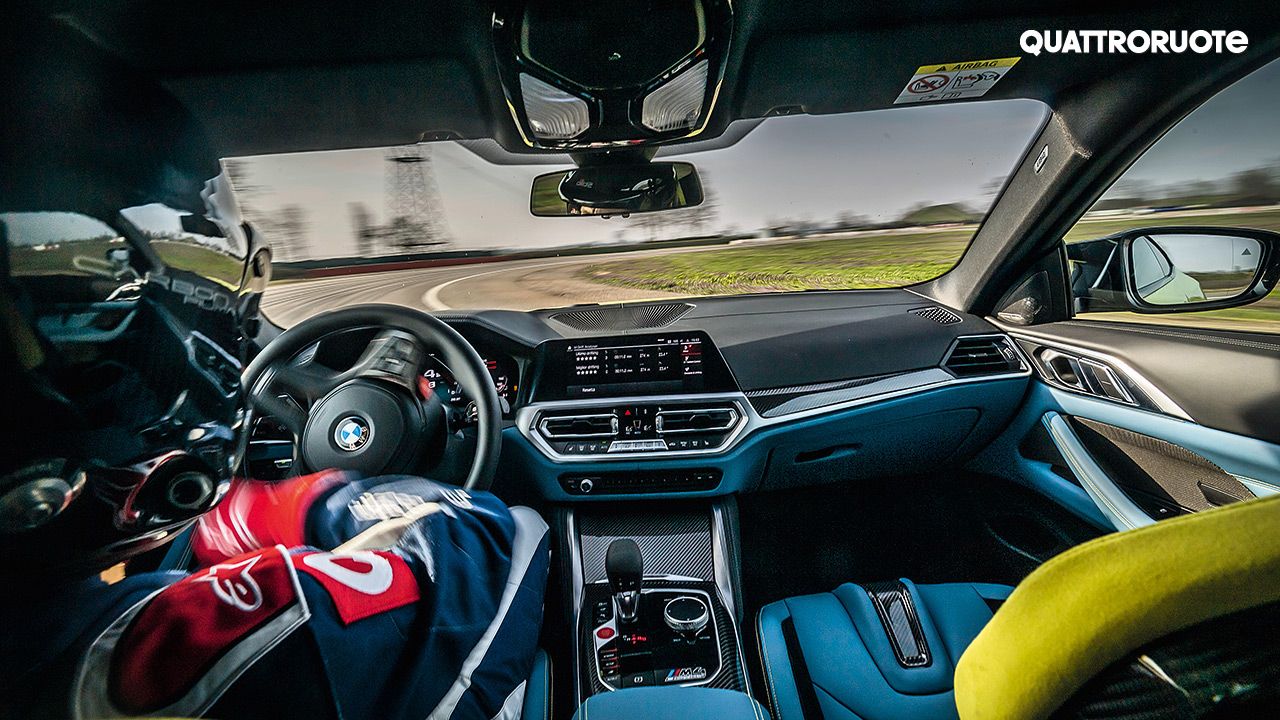





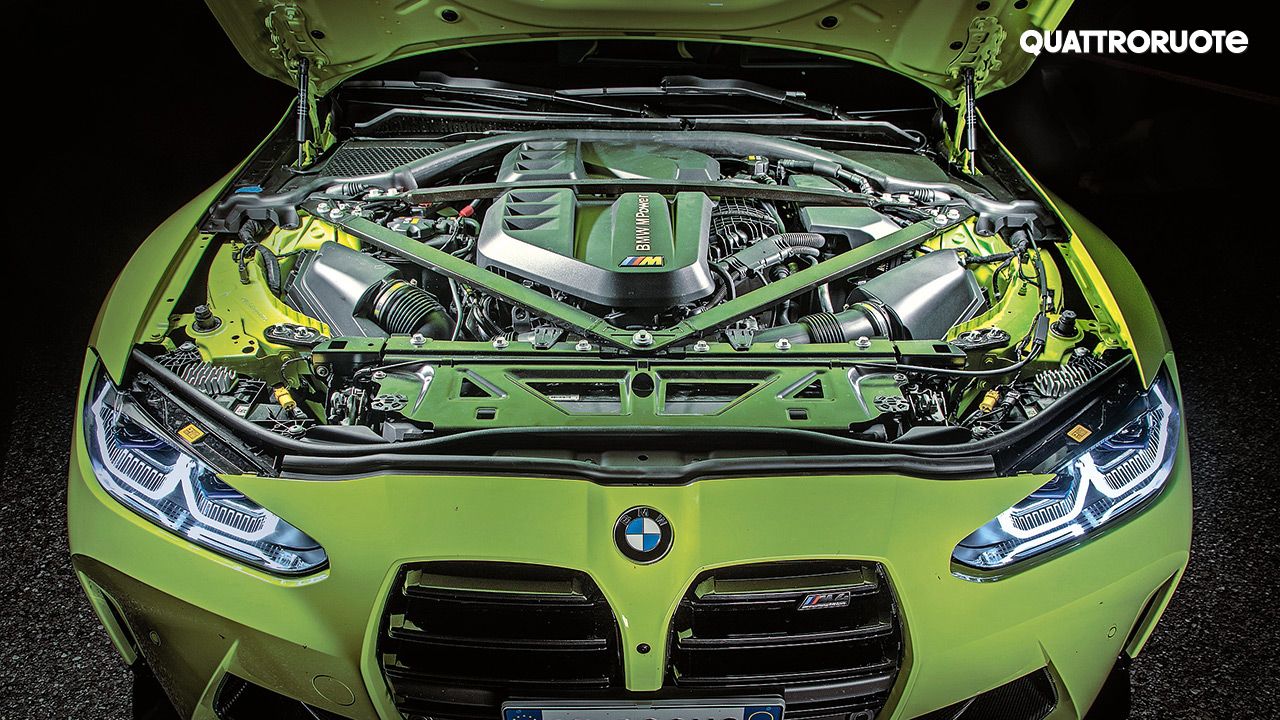






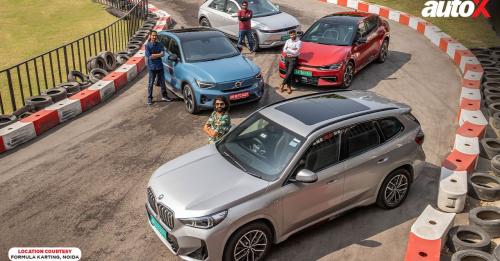

















Write your Comment